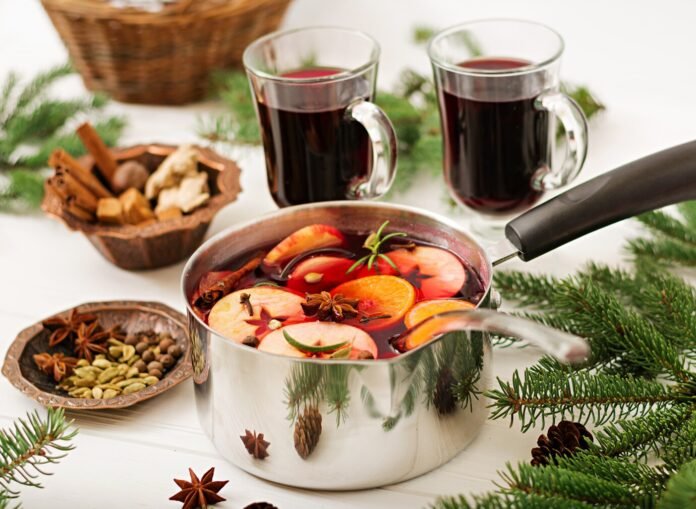1. What is Cooking Wine?
Cooking wine refers to wine that is specifically used in food preparation rather than for drinking. Unlike drinking wines, are typically made with a lower quality grape and often contain added salt and preservatives. The inclusion of salt is particularly important, as it helps the wine maintain its freshness during storage and prevents spoilage. Cooking wine is meant to enhance the flavor of dishes rather than act as a beverage, which is why it’s often used in sauces, marinades, and stews. It’s important to note that the taste of cooking wine can vary, and it may not always resemble the flavors of the wine from which it was made, making it a unique ingredient in the culinary world.
2. Different Types of Cooking Wine
There are several types of cooking wine, each suited for different kinds of dishes. One of the most common varieties is dry white cooking wine, which is typically used in seafood dishes, poultry, and certain sauces. It imparts a delicate, acidic flavor that brightens up the overall taste of the dish. On the other hand, dry red cooking wine is often preferred for hearty dishes, such as beef stews and pasta sauces. It provides a deeper, richer flavor profile. Sherry is another popular particularly in Spanish and Mediterranean cuisines. It adds a nutty, slightly sweet flavor and is frequently used in sauces and soups. For those looking for a more complex, herbal note, Marsala wine is frequently used in Italian cooking, notably in the classic Chicken Marsala. Understanding the different types of cooking wine and their corresponding uses will help elevate the flavors in your cooking.
3. How to Use Cooking Wine in Your Dishes
Using cooking wine can significantly enhance the flavors of many dishes, but it requires a bit of knowledge and care. Typically, cooking wine is used in sauces, marinades, or to deglaze a pan after searing meat. When making a marinade, the acidity in wine helps to tenderize proteins, while its flavors seep into the meat, infusing it with a depth that would be hard to achieve otherwise. When deglazing, wine helps to lift up those flavorful bits stuck to the pan, known as fond, which contribute a delicious base for your sauce or gravy. Additionally, the alcohol in cooking wine evaporates as it cooks, leaving only the concentrated flavors behind. However, it’s crucial not to add too much wine—adding it too early can result in an overpowering flavor, while adding it too late might not allow enough time for the wine to meld with the other ingredients.
4. Cooking Wine vs. Regular Wine: What’s the Difference?
Although both cooking wine and regular drinking wine originate from fermented grapes, they are quite different in their use and flavor profiles. The key difference lies in the added preservatives, salt, and sometimes sugar found in cooking wines. These ingredients help extend the shelf life of the wine, making it suitable for cooking over extended periods. Regular wine, on the other hand, is intended for drinking and is often more refined in taste. When cooking, it’s generally better to avoid using a bottle of regular wine that’s meant for drinking, as it can be too expensive for cooking purposes.
5. Can You Substitute Cooking Wine with Regular Wine?
If you find yourself without cooking wine, you can often substitute it with regular wine, though there are a few important things to consider. First, ensure that you adjust for the salt content if your recipe calls for a specific amount of seasoning. When substituting, it’s important to choose that complements the dish, as you would with cooking wine. For example, a dry white wine like Sauvignon Blanc can be swapped in for white in dishes like chicken piccata or seafood pasta. Similarly, a robust red like Cabernet Sauvignon can replace red in rich beef stews. Alternatively, if you don’t have wine at all, you can use other liquids like broth, vinegar, or fruit juice in small amounts, although this may alter the flavor and acidity balance of the dish.
6. Best Practices for Storing Cooking Wine
While cooking wines is designed to last longer than regular drinking it still needs proper storage to maintain its quality. Once opened, should be stored in a cool, dry place and ideally used within a few months. If you don’t cook frequently with it, keeping it in the fridge can help extend its shelf life. Sealing the bottle tightly is also important to prevent air from getting inside, which can lead to oxidation and spoilage. If you have leftover cooking wines after preparing a dish, it’s often best to discard it if it’s been opened for too long, as it can lose its flavor and become unpleasant to use in future recipes. For longer-term storage, consider purchasing small bottles of cooking wines or even freezing leftover wine in ice cube trays for later use.


